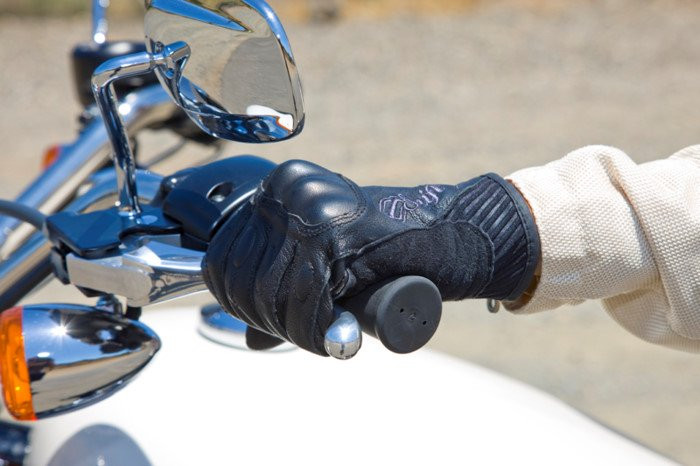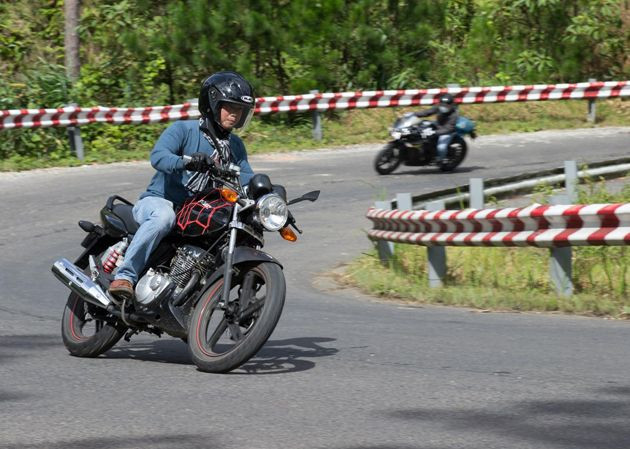5 warning signs of clutch problems that riders need to know
(Baonghean.vn) - Manual transmission vehicles are equipped with a clutch (manual clutch), which, if not operated properly, will cause wear and tear and damage very quickly. For this part to operate stably and give a feeling of "excitement", when controlling, the user needs to pay attention to the following abnormal signs.
1. The car is sluggish and not running well.
 |
If you find that your vehicle is not accelerating, is sluggish and the engine temperature is often high, these signs indicate that the manual clutch is having problems.
Normally, there are two types of manual clutch commonly used on manual clutch motorbikes: dry clutch and wet clutch (oil-soaked), the pressure is created by cylindrical springs arranged around or disc springs. In which, the wet clutch uses cylindrical springs arranged around and is more commonly used.
On manual transmission vehicles, the clutch is engaged and disengaged manually instead of by the gear lever like on automatic transmission vehicles. Therefore, it allows for more optimal torque control, creating excitement and enjoyment for the driver.
2. Clutch stuck
 |
When the user adjusts the clutch lever incorrectly, it will lead to a sticky clutch (squeezing the clutch lever fully but still not enough to disengage the clutch), which also causes the clutch to wear out quickly. At this time, shifting gears will be very difficult and heavier, when the dynamic load increases, it is easy to damage the gearbox. In addition, the phenomenon of clutch sticking also makes it difficult to adjust the idle, when stopping at a red light, the vehicle is easy to stall when only squeezing the clutch but not shifting to 0.
The clutch may not engage completely if the user adjusts the clutch lever play too low. This action leads to clutch slippage when overloaded, and reduces the life of the clutch plate.
3. The clutch makes a loud howl when running.
 |
Howling clutch occurs due to the primary gear (gear on the output shaft of the crankshaft) and secondary gear of the clutch having wear and tear. Then, the higher the engine speed, the louder the howling sound. This phenomenon often occurs with manual transmission motorbikes that have been used for a long time and have not been carefully maintained.
To get rid of the howling clutch, the car owner can change 1 or 2 gears, or reverse the direction of the primary gear (depending on the car). The clutch may still howl loudly when you change the primary gear, but this phenomenon will automatically stop after a short time.
4. The machine heats up quickly and the clutch makes a slipping sound.
The car quickly overheats, feels very sluggish, and has a reduced ability to carry heavy loads compared to before. This indicates that the car's clutch is having major damage. The reason is that the clutch has not been maintained for a long time after using the car. When using the car, the clutch has not been fully released and the throttle has been suddenly increased, forcing the gears, causing the clutch plates to wear out quickly.
At this time, the clutch plate may be damaged and worn out, or worse, the clutch plates may burn out during operation. To fix this, you should regularly maintain the clutch; replace the clutch plate so that the vehicle runs smoothly and operates more powerfully.
5. Clutch plate wear
 |
When the clutch plate wears out, it will cause energy loss on the transmission line from the engine to the wheels. Therefore, the vehicle will be sluggish, overheat quickly and reduce the ability to carry heavy loads.
The cause of clutch plate wear is usually due to two reasons: long-term use or user error. In which, the error from the inexperienced user is the main cause.
Some common user actions that cause overloading of the clutch include: Sudden acceleration before releasing the clutch completely, forcing the gear (running in high gear at low speed or heavy load), sudden clutch release causing the clutch plate to wear out quickly, even worse, it can lead to clutch burnout.
